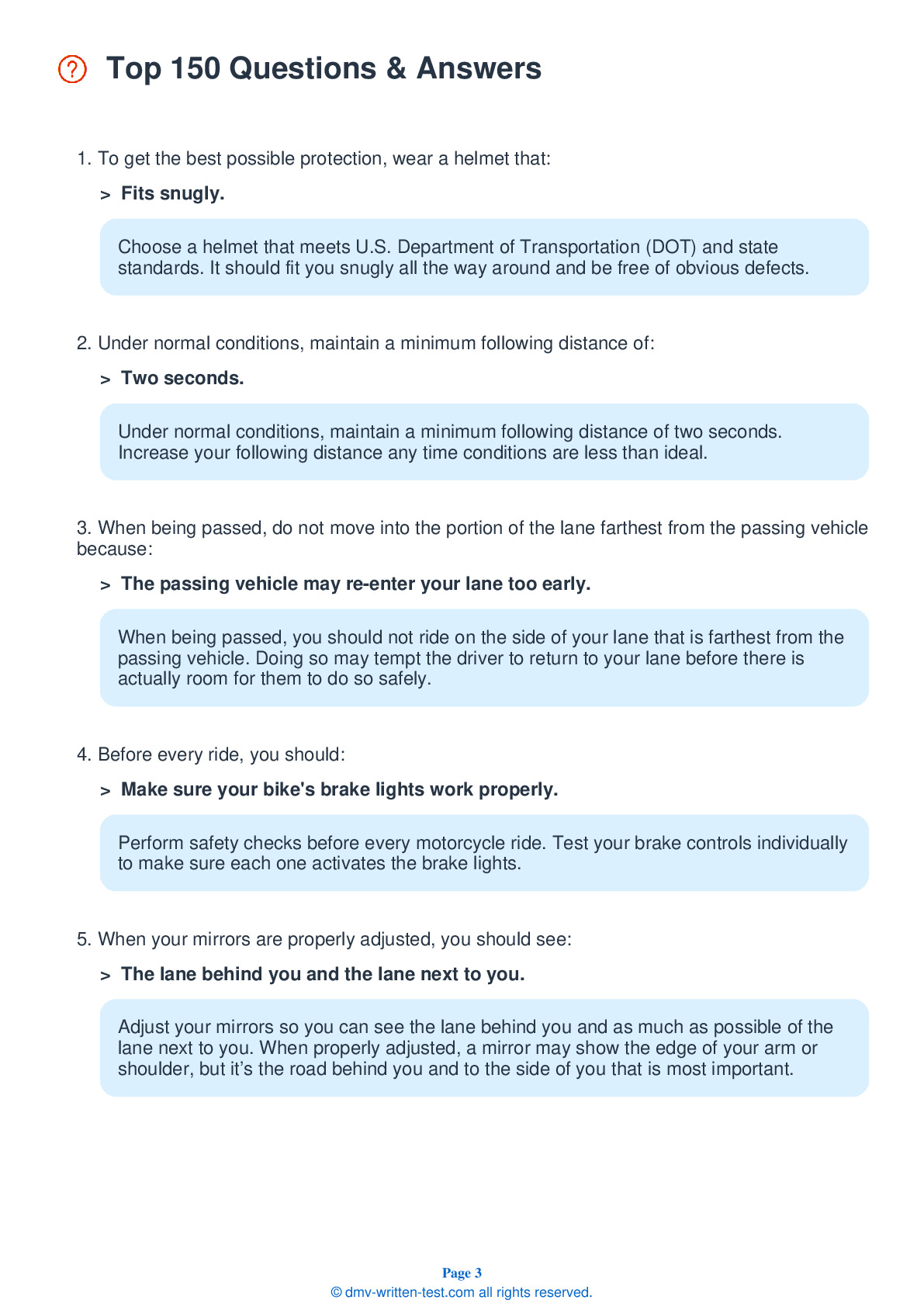2025 District Of Columbia Motorcycle Permit Test 16
The following questions are from real DMV written motorcycle permit tests. These are some of the actual permit questions you will face in District Of Columbia when getting your motorcycle learners permit. Each motorcycle theory practice test question has three answer choices. Select one answer for each question and select "grade this section." You can find this button at the bottom of the drivers license quiz. For a complete list of questions and answers for District Of Columbia please visit https://cheat-sheets.dmv-written-test.com/en/district-of-columbia/motorcycle.
Number of Tests
Number of Question
Passing Score
7. To accommodate a passenger, you may have to:
Explanation
Because of the extra weight placed on a motorcycle by a passenger, you may need to adjust the motorcycle's shocks before carrying a passenger. Because the motorcycle will sit at a different angle, you should also adjust the headlight and mirrors to compensate for the additional weight.
8. On a slippery surface, you should not:
Explanation
To ride safely on a slippery surface, you should use both brakes when slowing or stopping, reduce your speed, and avoid making sudden moves. Be alert to oily areas, dirt, gravel, shaded areas, and bridges, as these surfaces are more likely to be slippery than others.
9. It is important to flash your brake light when:
Explanation
It is a good idea to flash your brake light before slowing if someone is following you too closely. The other driver may be focused on you and be unaware of the upcoming hazard that is causing you to slow down. It is also important to flash your brake light if you are about to slow down in a place where other drivers might not expect you to do so.
10. A passenger on a motorcycle should:
Explanation
Passengers should get on a motorcycle only after the engine has been started and the transmission is put in neutral. They should sit as far forward as possible without hindering the operator's control of the motorcycle and should hold onto the operator's waist, hips, or belt.
11. When in traffic, motorcycles need:
Explanation
In traffic, a motorcycle needs as much distance to stop as a car does.
12. What does this hand signal mean?

Explanation




